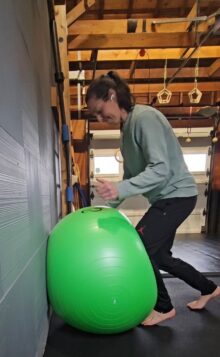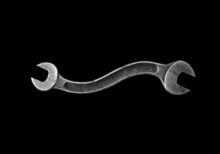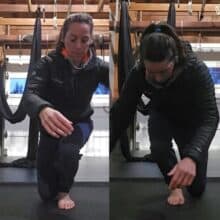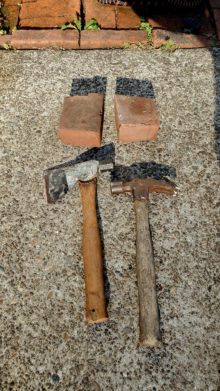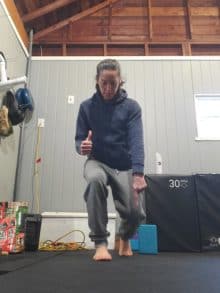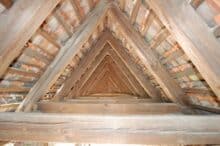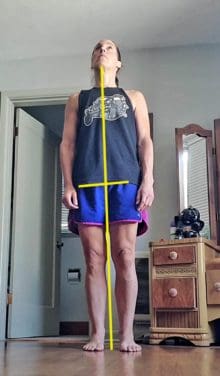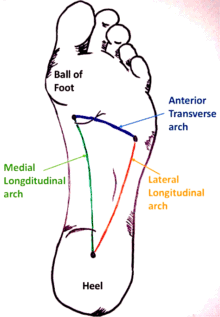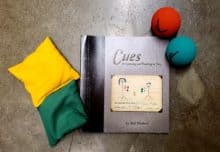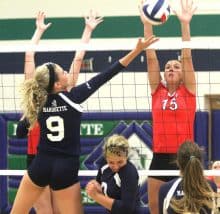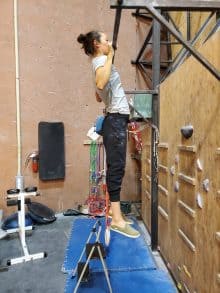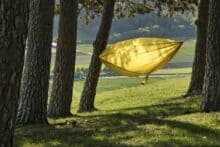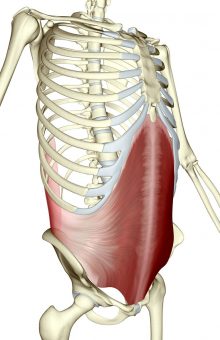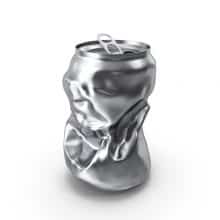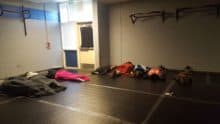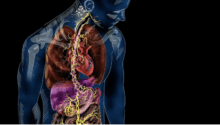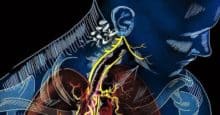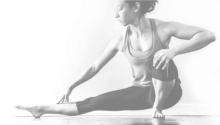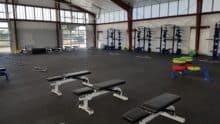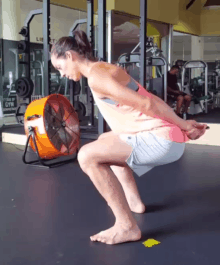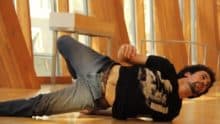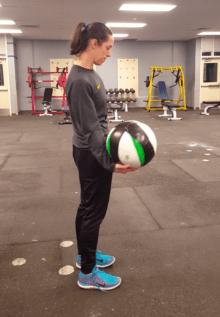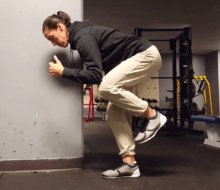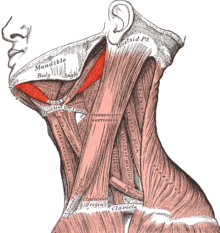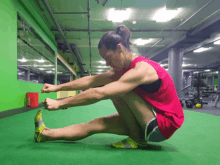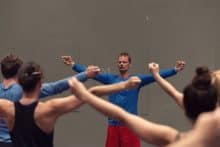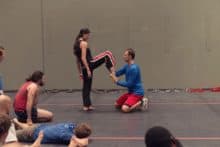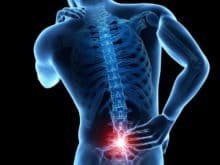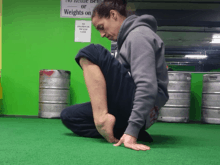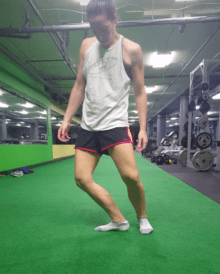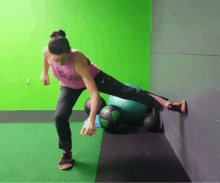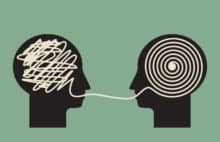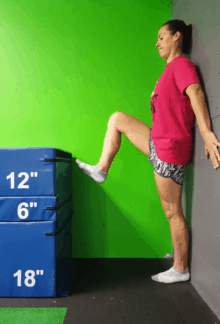In part 1, I suggested that using the knee as gas instead of brakes could help free up the knee for motion and elicit the hips and ankle-foot as stabilizers. For folks with chronic pain, however, their nervous system likely… Read more ›
Torsion. We all have it: a particular line of twist running through our carriage, gripping us in a certain way and keeping us upright. Each fold and joint tells its story, whether you realize it or not. It’s how we… Read more ›
Part One looks at identifying each leg and how each prioritizes a different foot arch. Directional Bias: Perpendicular vs. Parallel. Up leg works the foward and back (parallel to ground). Down leg works the up and down (perpendicular… Read more ›
To recap Part One: Create a sense of intrigue Provide multiple points of entry Establish pockets of safety Ask instead of assume This sh*t’s hard (which is why so few do it) After the weight shift lesson , three of… Read more ›
While walking through the streets of Europe last Spring, Adarian Barr wondered why his feet felt so good. He traced it back to the cobblestones. The lift, the variability, the multiple points of potential folding. This was the impetus behind… Read more ›
Pairs. Roles. Asymmetry. The body knows and the body has ways. Understanding the differences between the halves helps you appreciate them. One side isn’t ‘good’. The other isn’t ‘bad’. They hold a function within the system. Here’s a big picture… Read more ›
This post serves as a follow up to: A Path Towards Harm. Otherwise titled: The things I did wrong when I didn’t pay attention or have compassionate patience. The tag to this blog used to read, “fix yourself.” But… Read more ›
Push down. Seems simple enough. Intuitive. But I got it wrong. I got it wrong because my posture and mechanics favored a front-side dominance. (Quad-dominant folks tend to also fall into this category.) The knee bend, rounded shoulders, and dropped… Read more ›
This post serves as a companion piece to A Non-Central Axis. Where it showed you ways to identify a shifted midline, the following hopes to show how pulling to the right or left affects performance. The first thing to… Read more ›
Everything I know about the transverse arch, I owe to Adarian Barr. The following is my attempt to take his words and concepts and relate them to my own body and understanding. It is, in effect, my translation. The layers… Read more ›
The following video drummed up tons of interest in Bal-A-Vis-X over the past year: It’s how I was made aware of it. I was tagged via facebook, twice. While certainly intriguing and catchy, these edits of action do not… Read more ›
For many reasons and convergences of fate, I recently took on the assignment of coaching high school volleyball. It was a sport I knew very little about and had the least experience coaching and playing. It was also a position… Read more ›
Pullups. The bane of every chubby kid’s existence. We were strong, just not relatively strong. We liked to stick what we were good at, which was moving things other than ourselves. Eventually my weight leveled out and I was drawn… Read more ›
Slings. I’ve heard them referred to often, but never quite knew what they were or why they were important. I understood that they were anatomically determined lines within the body, but in a structure that is fully connected, it didn’t… Read more ›
As I am learning to access and mobilize my ribs, I have begun to understand and control the deep inner workings of my trunk, particularly the space between the ribs and pelvis. One might think of this as the shortest… Read more ›
This is the second post taken from the mind of Nicole Uno. It is a continuation of the first, explaining Rotational Organization. For the most part, we are floating. Skating and tip-toeing off the ground because we can. We have… Read more ›
Interest dictates pretty much everything. It is the neck that turns the head and keeps curious eyes fixed. At its most illuminating and significant, it attracts the onlooker into their own inner workings. Believe that you are both interesting and… Read more ›
The following is part two of my course notes and findings from Stress, Movement, and Pain. As practitioners seeking to help bio-psycho-social organisms, we have to be able to read, analyze, and gather information from all three dimensions. The… Read more ›
The following is part one of my course notes and findings from Stress, Movement, and Pain. Linked through the perception of threat and cause to protect, Seth Oberst generously delivered on the hows, whats, and whys between sensation (or lack… Read more ›
The following is a glimpse into the mind of Nicole Uno (IG @unotraining). Rotational Organization allows for the simultaneous existence between contract and relax. Thoroughly simplified, consider two gears. There is an impetus of force and a corresponding area… Read more ›
A PE teacher on one side of the country texts her trainer pal on the other. “I was thinking of getting this textbook for my weightlifting class.” “Why do you need a textbook?” “So I have something to reference… Read more ›
For a long time, I believed that extension was the working opposite of flexion. They felt as contrary as they looked. Folding forward was natural and effortless. Folding back was a resistance to that ease. The struggle was a lesson… Read more ›
If you’re curious about why only half a workshop I’ll tell that story at the end. Tom Weksler’s Movement Archery workshop was a lesson in angular momentum. We rolled, we spun, we bruised our pointy bits. Imagine an archer… Read more ›
When I got my first chin up, I felt superhuman. Finally hitting that relative strength benchmark felt like a magic trick I was somehow involved in. Even more mystifying, though, is that I had absolutely nothing on a pronated grip… Read more ›
Balance is a movement intelligence. It relies on systemic interdependence — that your parts work well enough and that the body can efficiently execute interpretations from the brain. Creating feet that grip and then utilizing them in skill-based, eyes closed situations bridges… Read more ›
Plagued by forward head posture and phone-down eyes, the act of tilting the head back can become unnerving. Used to being underutilized, the cervical spine has to be coaxed into believing extension can be a position of comfort. The shoulders,… Read more ›
Joint ‘popping’ is a curious thing. It alarms without hurting. Especially when you realize it wasn’t there before. You notice something is different when you do that particular thing in that particular way. The different becomes ‘less than’ when… Read more ›
Engaging with your work demands a certain degree of ownership. There must be a benefit to the challenge presented, beyond just a hard-to-apply confidence. A task can serve as a test of will, a test of adaptability, and/or a test… Read more ›
Doing without knowing. Playing, creating, learning. Adjusting and adapting. Describing Fighting Monkey is an act in organizing verbs. Everything overlaps and intertwines and is a wonder. The only certainty you are left with is that you have experienced something good… Read more ›
Issues with joints or body parts can almost always be traced back to usage. When faced with a familiar task in a familiar environment, our habitual patterns of movement follow a particular chain of command. We clutch and are clutched… Read more ›
“I’m going to explore the depths of the ocean.” “You’re gonna what?” “I’m going to get into this magical pressure suit, close myself off to the known world, and look for cool stuff.” “Why would you want to do… Read more ›
Movement overlaps. Brain work = joint work = speed, power, strength, and coordination work. We have structures and we have capacities. Our practice establishes the abilities of both. There is a general consensus that if your parts work better you’ll… Read more ›
Body control is all the rage. A popular want is increasing active range of motion. People want to get there so they can do stuff there. Functional Range Conditioning uses slow, controlled movement to examine individual joints, build capacity in… Read more ›
This post serves as a companion piece to Pain Exploration: Medial Knee. It picks up right where it left off, with manipulations of the ankle, foot, and toes. A low sit with the heel up and toes extended (an expression… Read more ›
Increasing dorsiflexion is a popular yet frustrating goal. Getting the ankles to do more lessens the strain on the knees, and is an important factor in being able to drop into a deep squat — an often used marker of overall… Read more ›
The vast majority of movements happen going forward. We reach, walk, look, and move toward what’s in front of us. Then we sit by pushing our butt backward. This front-to-back plane of motion (or stillness) is where we reside. Our… Read more ›
“Translation allows for otherwise separate entities to synapse and communicate.” I have been a teacher for thirteen years and a movement therapist for five. As I toggle through the two professions, an unlikely blend has taken place. I find… Read more ›
We tend to move in ingrained patterns, within the same degrees and utilizing the same amount of space. Thinking bigger about what a joint is capable of doing allows us to use it in ways we don’t, which often aligns… Read more ›
Sliding is one of the most fun ways to get from here to there. True to form, it’s also a sneaky little way to grasp an underlying understanding of movement. F=ma (force equals mass times acceleration) is explained in… Read more ›
Yesterday, Guido Van Ryssegem was gracious enough to speak to us at the Free Salem Fitness Summit. While his topic was “Resolving Upper Extremity Movement Dysfunctions”, he delivered plenty of nuggets regarding motor learning in general. Here are three gems I… Read more ›




